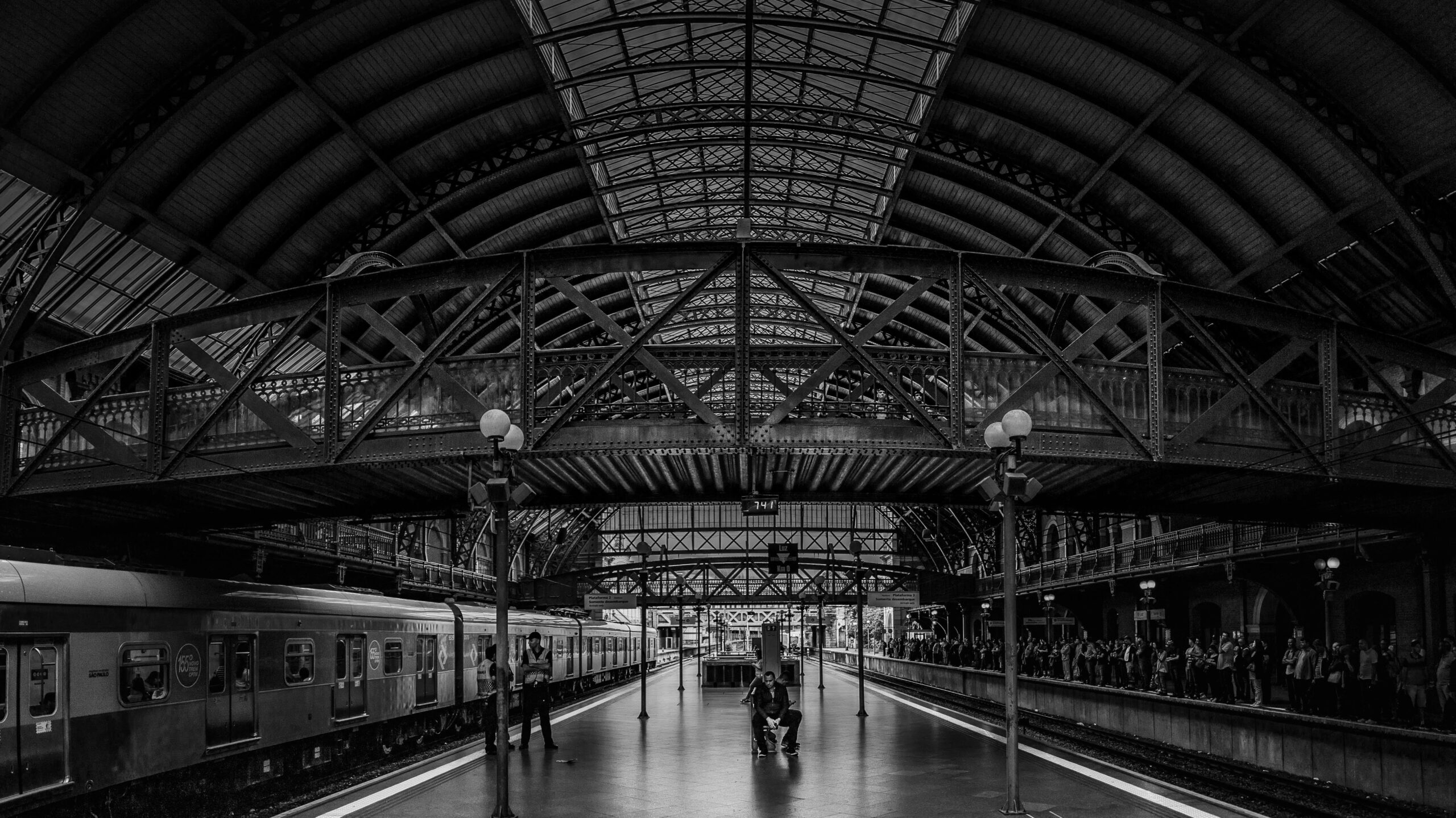Unlocking the potential of BIM and 5G in railway infrastructure is set to revolutionize the way we approach design, construction, and maintenance.
With Building Information Modeling (BIM), we can streamline the entire process, fostering collaboration between teams and minimizing costly errors. Coupled with the lightning-fast speeds and low latency of 5G technology, we can achieve real-time data exchange, enabling efficient decision-making and predictive maintenance. The future holds tremendous possibilities for enhancing safety, efficiency, and overall performance in railway infrastructure through this powerful combination of BIM and 5G.
The combination of Building Information Modeling (BIM) and 5G technology holds immense potential for the future of design, construction, and maintenance in railway infrastructure. The integration of these two powerful technologies can bring about significant advancements in efficiency, collaboration, and real-time data exchange. In the realm of design, BIM allows for the creation of detailed and accurate 3D models of railway infrastructure.
The integration of Building Information Modeling (BIM) and 5G technology is indeed a game-changer for the design, construction, and maintenance of railway infrastructure. By combining these two powerful technologies, we unlock a whole new level of efficiency and collaboration that was previously unimaginable.
One of the key benefits of BIM in the realm of design is its ability to create highly detailed and accurate 3D models. With BIM, designers can visualize every aspect of the railway infrastructure before it’s even built. This not only helps identify potential issues early on but also allows for better decision-making throughout the design process. Furthermore, when these detailed 3D models are combined with the speed and reliability of 5G technology, real-time data exchange becomes seamless. Design teams can collaborate effortlessly regardless of their physical location, making it easier to work together across different time zones or even countries.
This level of collaboration leads to improved communication, reduced errors, and ultimately faster project delivery. Additionally, with 5G’s unparalleled connectivity capabilities, stakeholders involved in railway construction projects can access real-time information from anywhere at any time. For example, on-site workers can instantly access updated plans or make changes directly on their devices using cloud-based BIM platforms powered by 5G technology.
This eliminates delays caused by waiting for information updates or traveling back to an office for necessary changes. Moreover, this integration opens up exciting opportunities for predictive maintenance in railway infrastructure. By collecting real-time data from sensors embedded within the infrastructure itself through a robust 5G network connection and analyzing it using BIM software tools such as asset management systems or artificial intelligence algorithms; maintenance teams can proactively identify potential issues before they escalate into costly problems.
In conclusion, Building Information Modeling (BIM) combined with 5G technology revolutionizes how we approach design projects in railway infrastructure by providing accurate visualizations and facilitating efficient collaboration. Furthermore, the ability to access real-time data and perform predictive maintenance through this integration ensures the longevity and sustainability of railway infrastructure. Embracing these technologies is crucial for staying ahead in an increasingly competitive industry, where efficiency and innovation are paramount.
These models can be enriched with a wealth of information, including material specifications, equipment details, and maintenance schedules. By leveraging 5G connectivity, designers can access and manipulate these complex models in real-time, even from remote locations. This enables seamless collaboration among multidisciplinary teams, leading to faster and more accurate decision-making during the design phase. Additionally, the high-speed and low-latency capabilities of 5G can support immersive technologies, such as virtual reality (VR) and augmented reality (AR), allowing stakeholders to visualize and experience the proposed designs before construction begins. During the construction phase, BIM combined with 5G can enhance communication and coordination among various contractors and subcontractors.
Real-time access to the BIM models, coupled with fast and reliable data transfer through 5G, enables smooth collaboration and information exchange on the construction site. This can help in detecting and resolving clashes or conflicts between different elements, reducing rework and delays. Furthermore, 5G-powered IoT (Internet of Things) devices can be deployed to monitor construction progress, gather data on materials usage, and perform quality control checks, all of which can be seamlessly integrated into the BIM models for accurate as-built documentation. When it comes to maintenance, the integration of BIM and 5G can revolutionize asset management in railway infrastructure. With real-time connectivity provided by 5G, sensors and IoT devices embedded in the railway assets can continuously collect data on various parameters, such as temperature, vibration, and stress. This data can be fed into the BIM models, allowing for predictive maintenance strategies and timely interventions.
The high-speed and low-latency capabilities of 5G enable swift analysis of the collected data, facilitating condition monitoring and enabling proactive maintenance actions. This can significantly improve asset performance, reduce downtime, and extend asset lifespan. In conclusion, the convergence of BIM and 5G technology is poised to reshape the future of design, construction, and maintenance in railway infrastructure.
How does BIM and 5G integration improve railway infrastructure design?
What are the advantages of using BIM and 5G in railway construction?
How does BIM and 5G technology enhance maintenance processes in railways?
What is the role of BIM and 5G in optimizing efficiency in railway infrastructure?
How can BIM and 5G improve safety measures in railway design, construction, and maintenance?
What is the future outlook for integrating BIM and 5G in railway projects?
The combination of real-time collaboration, immersive technologies, and IoT-enabled predictive maintenance has the potential to enhance efficiency, reduce costs, and improve the overall performance and safety of railway systems. Embracing this technological synergy can unlock new possibilities and ensure a more sustainable and connected future for the railway industry. In today’s rapidly evolving world, the railway industry is not immune to the advancements brought about by technology. The convergence of real-time collaboration, immersive technologies, and IoT-enabled predictive maintenance holds immense potential for enhancing efficiency, reducing costs, and improving overall performance and safety within railway systems. Real-time collaboration allows stakeholders across different departments and locations to work together seamlessly. This means that engineers, technicians, and operators can collaborate in real time to resolve issues swiftly and efficiently. By sharing information instantly, they can make better decisions that lead to optimized operations. Immersive technologies such as virtual reality (VR) and augmented reality (AR) provide new opportunities for training staff members. With VR simulations, employees can experience realistic scenarios without any risks or downtime. AR overlays relevant data onto the physical environment in real time, enabling technicians to perform complex tasks more accurately. IoT-enabled predictive maintenance takes railways’ maintenance practices to a whole new level. By integrating sensors into various components of trains and rail infrastructure, it becomes possible to gather crucial data on their condition in real time.
This data allows maintenance teams to detect potential faults before they escalate into costly breakdowns or accidents. Proactive maintenance reduces downtime significantly while saving costs on unnecessary repairs. By embracing this technological synergy of real-time collaboration, immersive technologies like VR/AR training solutions alongside IoT-enabled predictive maintenance systems; the railway industry can unlock numerous possibilities for growth and improvement. Efficiency gains are achieved through streamlined processes resulting from improved communication between different teams involved in railway operations; this leads to faster decision-making processes leading ultimately towards optimized resource allocation.
Cost reduction is another significant advantage brought about by these technological advancements. Predictive maintenance ensures that only necessary repairs are carried out when required instead of relying on pre-set schedules or waiting for equipment failure which leads to increased expenses due to unexpected downtimes.
Furthermore, improved overall performance ensures better customer satisfaction through more reliable train services with minimal disruptions caused by unexpected breakdowns. By leveraging real-time collaboration and predictive maintenance, railway systems can operate at peak performance levels, ensuring smooth operations and a consistent passenger experience. Safety is of paramount importance in the railway industry.
By adopting these advanced technologies, rail operators can proactively identify potential safety hazards and take necessary precautions before accidents occur. This not only protects passengers but also ensures the well-being of staff members working on railways. In conclusion, embracing the combination of real-time collaboration, immersive technologies like VR/AR training solutions, and IoT-enabled predictive maintenance has the power to transform the railway industry.


2 thoughts on “Overcoming Challenges: Implementing BIM and 5G in Railway Projects”